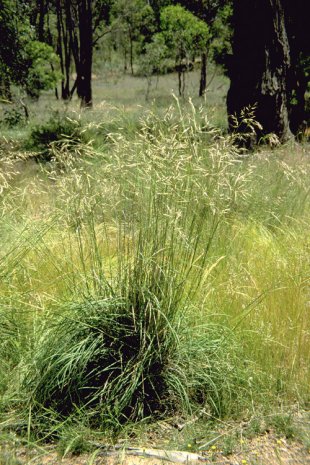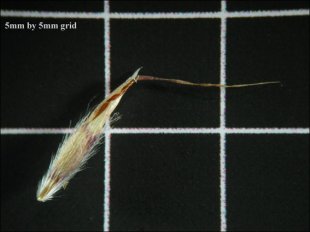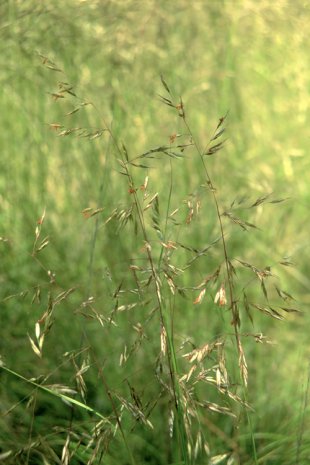
Silvertop (or redanther) wallaby grass
SCIENTIFIC NAME: Joycea pallida (formerly Danthonia pallida)
CATEGORY: C3 perennial
IDENTIFICATION TIPS
- A large, erect, yearlong green, perennial tussock to 1.8 m tall
- Leaves are long, fine, grey-green and often rolled and hairy; Ligule is a hairy rim 1-6mm long
- Seedhead is an open panicle to 35cm long; prominent orange-red anthers are exposed at flowering
- Flowers from late spring to summer
CLIMATIC & SOIL REQUIREMENTS
- Common in drier areas and sometimes dominant in grassy open forests and woodlands; often a relic species where woodland has been cleared
- Mostly found on skeletal to shallow, infertile, sedimentary soils
GRAZING & NUTRITIONAL VALUE
- Low to moderate feed quality
- Digestibility not measured
- Crude protein not measured
MANAGEMENT STRATEGIES
- Forms a valuable summer feed in harsher environments if kept short and green
- Generally avoided by stock due to its tough leaves and the high proportion of dead leaves in the tussock
- It is an important “indicator” species of light, infertile soils that need special management
- A valuable species for protection against erosion on slopes and ridges
- Conservatively graze to maintain populations, as it will often rapidly decline if frequently defoliated
SIMILAR PLANTS
- Wallaby grasses (Austrodanthonia spp.) lack orange-red anthers and generally form smaller tussocks




